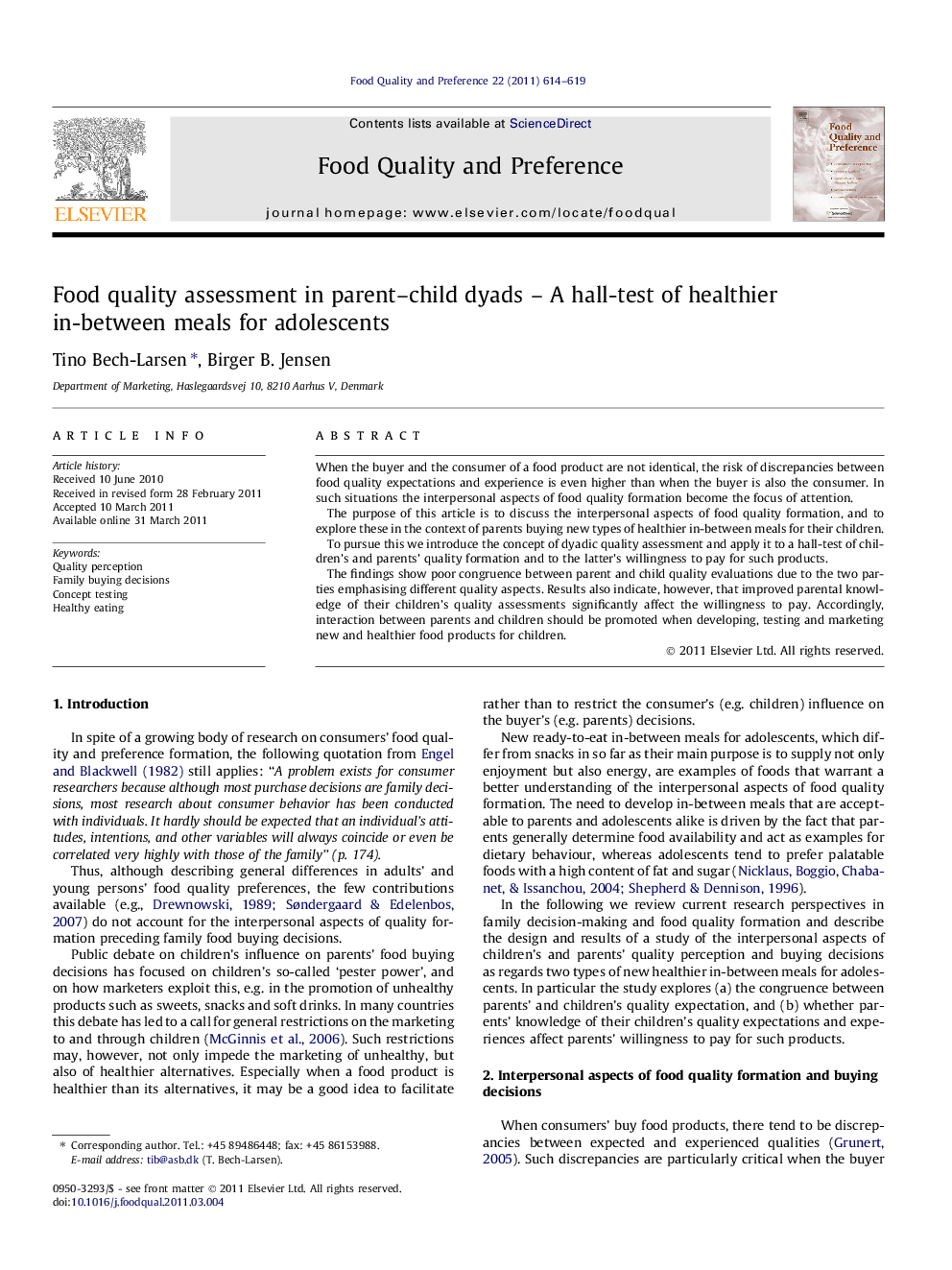| Article ID | Journal | Published Year | Pages | File Type |
|---|---|---|---|---|
| 4317582 | Food Quality and Preference | 2011 | 6 Pages |
When the buyer and the consumer of a food product are not identical, the risk of discrepancies between food quality expectations and experience is even higher than when the buyer is also the consumer. In such situations the interpersonal aspects of food quality formation become the focus of attention.The purpose of this article is to discuss the interpersonal aspects of food quality formation, and to explore these in the context of parents buying new types of healthier in-between meals for their children.To pursue this we introduce the concept of dyadic quality assessment and apply it to a hall-test of children’s and parents’ quality formation and to the latter’s willingness to pay for such products.The findings show poor congruence between parent and child quality evaluations due to the two parties emphasising different quality aspects. Results also indicate, however, that improved parental knowledge of their children’s quality assessments significantly affect the willingness to pay. Accordingly, interaction between parents and children should be promoted when developing, testing and marketing new and healthier food products for children.
► Although most food products are bought to be consumed by more than one individual, there is a lack of research on the interpersonal influences on the quality formation of food products. ► To imitate a dyadic decision-making process for in-between meals bought by the parent to be consumed by the child, a study design involving measures of quality perception and WTP before and after tasting in-between meals was developed. ► The results of the study show that the discrepancies between quality expectations and experience are increased when formed by different individuals. ► Parents’ predictions of their children’s quality experience for new in-between meals were considerably poorer than those of the children themselves. ► Only the parent’s own – but not the child’s – quality expectations affected the parent’s initial WTP. Parents’ WTP were more likely to be influenced by their children’s quality ratings when these were based on taste experience.
